If you’re a Shopify store owner, you know the pain of losing potential customers before closing a sale. A common reason for this is that the average Shopify store’s purchase process is long and complicated. ClickFunnels can complement this service and make it easier to market and sell your products.
ClickFunnels is a powerful sales funnel builder that can be used in conjunction with Shopify to increase your store’s conversion rate and boost sales. When you use ClickFunnels and Shopify together, you can create high-converting sales funnels, identify hot prospects, and much more.
This is a powerful combination of services. Let’s take a closer look at some of the use cases of ClickFunnels for Shopify. If you’re interested in trying it for yourself, we’ll also cover how to set up ClickFunnels with Shopify.
Use Case #1: Create High Converting Funnels To Increase Sales
Shopify is a great e-commerce platform that can be used to set up an online store. But it has its limitations when it comes to sales and marketing.
After all, you can’t be dependent on the platform to drive traffic and conversions.
You need to put in the extra effort to attract visitors, engage with them, and convert them into paying customers.
In a situation like this, sales funnels can be very useful. A sales funnel is a process that takes your prospects from awareness to purchase.
The goal of using a sales funnel is to guide website visitors through your marketing and sales process in a way that is optimized for conversion.
The success of your sales funnel depends on how well you’re able to guide your prospects through each stage of the journey.
That’s where ClickFunnels comes in. ClickFunnels is a sales funnel software that allows you to create high-converting sales funnels.
As a result, you can increase your conversion rate and boost sales. Here’s how it works:
- You first need to create a sales funnel with ClickFunnels. A sales funnel consists of a series of pages (called “funnel steps”) that guide your prospects through the purchase process.
- Each funnel step is designed to achieve a specific goal, such as getting the prospect to add a product to their cart or complete their purchase.
- Once you’ve created your sales funnel, you need to integrate it with your Shopify store. If you need help integrating your Shopify store with your ClickFunnels account, you should refer to the ClickFunnels and Shopify integration section below.
- Once the integration is set up, your prospects will be able to go through your sales funnel and ideally make a purchase on your Shopify store.
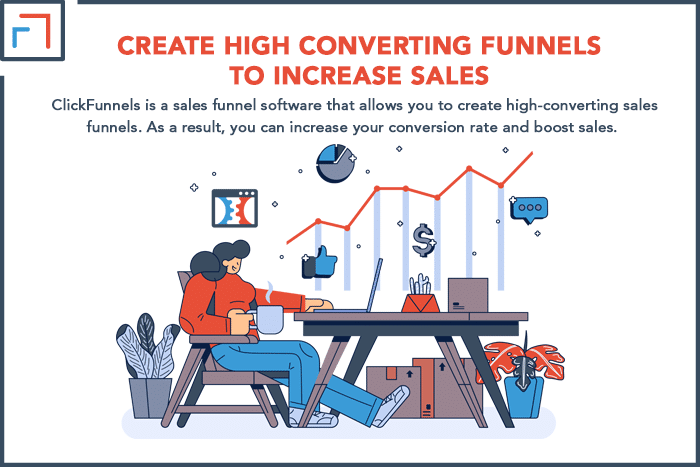
Example: Creating a High-Converting Funnel for a Shopify Store
For example, let’s say you’re selling grooming products for men on your Shopify store.
You can use ClickFunnels to create a sales funnel that looks something like this:
- A landing page with a lead magnet (such as a free e-book on grooming tips for men) to capture prospects’ email addresses.
- An email sequence to nurture prospects and build trust.
- A sales page to upsell prospects on your flagship product.
- An order confirmation page.
- A post-purchase thank-you page.
With this sales funnel in place, you can guide your prospects through your marketing and sales process in a way that is optimized for conversion.
Moreover, you can also track the progress and results at each stage of the funnel to see where prospects are dropping off.
This way, you can make necessary changes to improve your conversion rate. Here’s the best part:
If you look at this funnel, every single element that would otherwise take you hours of coding to build can be created in minutes with ClickFunnels.
Use Case #2: Redefine Your Sales Strategy Using One-Click Upsells and Cross-Sells
Another powerful use case of ClickFunnels for Shopify is one-click upsells and cross-sells.
One-click upsells are additional products that you offer to customers after they’ve made a purchase.
Continuing our example from the previous section, let’s say your flagship product is a shaving cream, and you’ve created a sales funnel to sell this product.
Let’s say a customer buys your shaving cream from the sales funnel.
This is where the powerful one-click upsell comes in, and with it comes your chance to make some extra bucks using ClickFunnels.
Once the customer has made the purchase, you can offer them an additional product at a discounted price, such as a razor.
The key here is to make the offer so irresistible that the customer can’t say no. For example, you can offer the razor at a 50% discount.
Or you can offer it for free, but the customer will still have to pay for shipping.
Cross-sells, on the other hand, are products that you offer to customers who are browsing or have already purchased a different product.
For instance, a customer may buy a razor from your Shopify store. On the Thank You page, you can offer them a shaving cream or an aftershave as a cross-sell.
It’s not discounted, but it is related to their purchase. This is a great way to boost sales and increase the average order value of your customers.
With ClickFunnels, you can create one-click upsells and cross-sells for your Shopify store quickly and easily. The process is simple:
- First, you need to create a sales funnel for your upsell or cross-sell product.
- Next, you need to integrate your Shopify store with ClickFunnels.
- Once the integration is complete, ClickFunnels will show the upsell or cross-sell offer to your customers after they’ve made a purchase on your Shopify store.
With the help of ClickFunnels, you can increase sales and revenue without doing a ton of extra work.
Use Case #3: Identify Hot Prospects With ClickFunnels’ Advanced Tracking Features
ClickFunnels also comes with powerful tracking features that let you track the progress of your sales funnel and identify hot prospects.
For example, let’s say you have a sales funnel for your flagship product (like shaving cream, in our example).
With ClickFunnels’ tracking features, you can see how many people have visited your sales page, signed up for your email list, gone through your email sequence, and bought your product.
Having access to this information will help you identify which prospects are interested in your product and are more likely to buy it.
Put simply, by using ClickFunnels in conjunction with Shopify, you will be able to differentiate better between hot and cold prospects.
You can also use ClickFunnels’ advanced tracking features to see where prospects are dropping off in your sales funnel.
For instance, if you see that a lot of prospects are leaving your sales page without taking any action, then you know that there’s something wrong with your sales page.
For instance, maybe the copy is not compelling enough. Or maybe the design is not attractive.
Whatever the case may be, you can use ClickFunnels’ tracking features to identify the problem and make necessary changes to improve your conversion rate.
By identifying and rectifying the issues in your sales funnel, you can increase your chances of making a sale and generating revenue.
This way, you will be better positioned to meet your sales targets with a targeted approach.
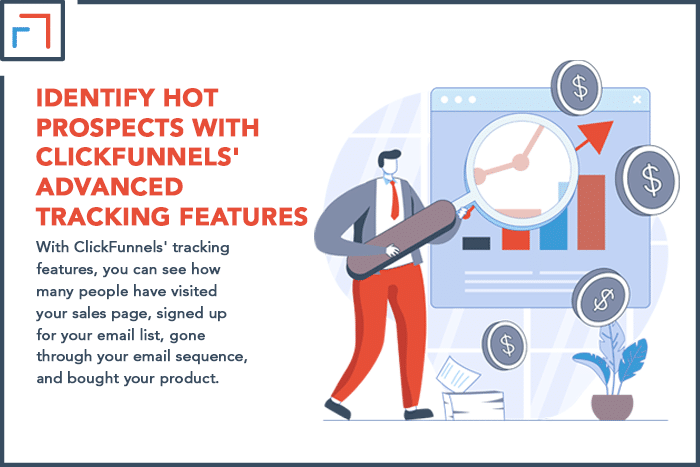
A/B Testing With ClickFunnels
Another important aspect of using Clickfunnels is its A/B testing feature.
A/B testing, also known as split testing, is a method of comparing two versions of a page to see which one performs better.
For example, let’s say you have two versions of your sales page:
Version A has a headline that says, “The Best Shaving Cream for Men.”
Version B has a headline that says, “The Best Shaving Cream for a Smooth Shave.”
With A/B testing, you can show both versions of the sales page to a group of prospects and see which one performs better.
Alternatively, you can create two email sequences and see which one gets more people to buy your product. The possibilities are endless.
The version that performs better is the one that you should use going forward.
By using the better-performing version, you make sure that you are putting in your best effort to simplify the purchase process for your leads and, in turn, increase sales.
Here’s how to run a split test in ClickFunnels:
- Log in to your ClickFunnels account, and click on the “Funnels” tab.
- From the list of your existing funnels, select the one that you want to experiment with.
- From within the funnel, select the funnel step you want to create a split test variation on.
- Click on the “Create Variation” button.
- A dialogue box will appear, giving you two options: Create Duplicate Page and Create From Template. Click on the most applicable option.
Now, you will have two versions of your funnel step. You can make the necessary changes to each version to create a split test.
For example, if you’re split testing a sales page of your Shopify store, you can change the headline, the copy, the images, or anything else that you think might improve the conversion rate.
Once you’ve made the necessary changes, it’s time to start the split test. To do that, click on the “Start Split Test” button.
ClickFunnels will begin redirecting traffic to your sales page evenly between the two versions.
After a while, it will show you which version performed better. Based on the analytics, you will be able to decide which version to use going forward.
However, it’s important to note that split testing is a continuous process.
You should always be split testing different elements of your sales funnel to see which ones perform better.
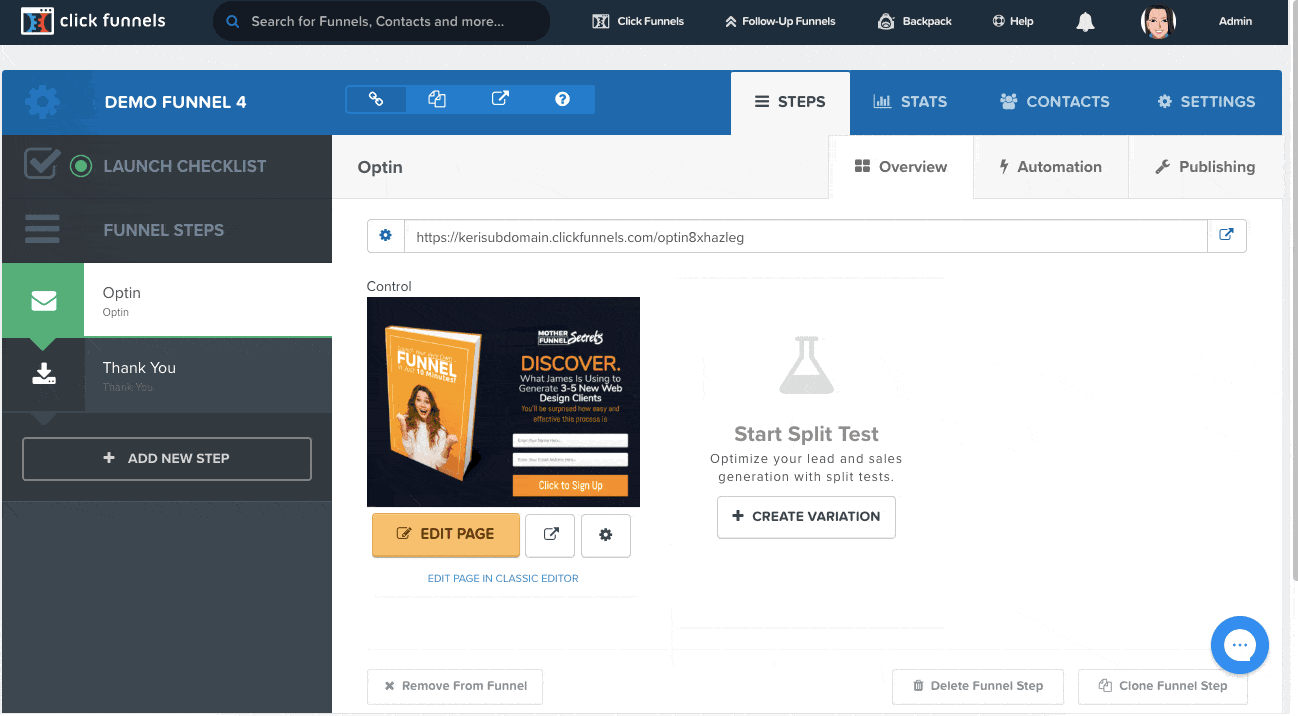
How To Integrate ClickFunnels With Shopify?
Before you can begin benefitting from using ClickFunnels with Shopify, you need to integrate the two platforms.
Fortunately, integrating ClickFunnels with Shopify is a relatively simple process.
Here’s what you will need:
- An active Shopify merchant account.
- A ClickFunnels account with an active billing plan.
- A product to sell with an SKU attached.
To integrate ClickFunnels with Shopify, follow the steps below:
1. Before returning to ClickFunnels, log into your Shopify account in a different window.

2. From within your ClickFunnels account, click on the “Account” tab to open the drop-down menu and click on the “Integrations” button.
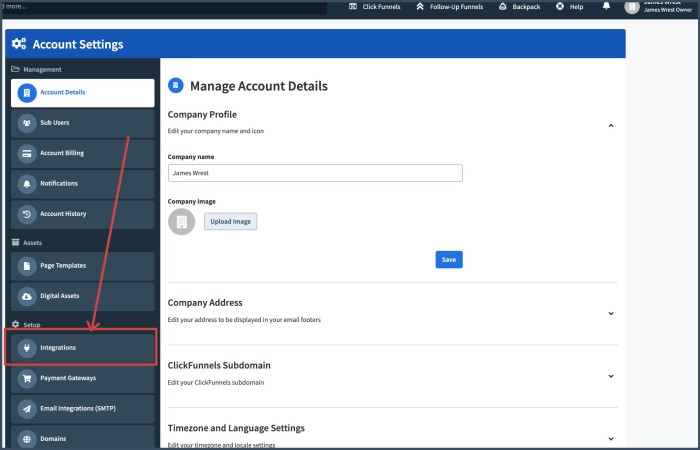
3. Select “Add New Integration.”

4. Search through the list of third-party APIs available in your account and click on Shopify.

5. Enter a suitable nickname under the “Integration Nickname” field. Next, enter your Shopify Store URL into the “Shopify URL” field. Before entering your URL, ensure that there isn’t any HTTP at the beginning. Finally, click on the “Connect Integration” button.
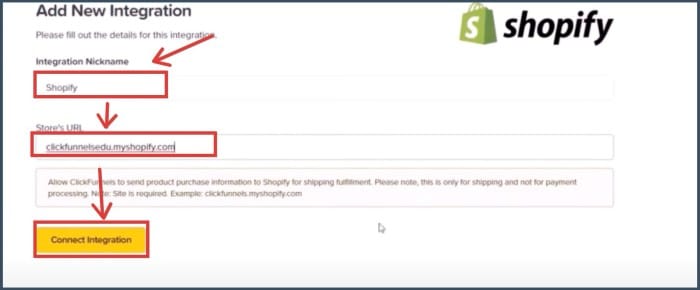
6. Once you are on the next page, scroll down to the bottom of the page and click on the “Install Unlisted App” button.
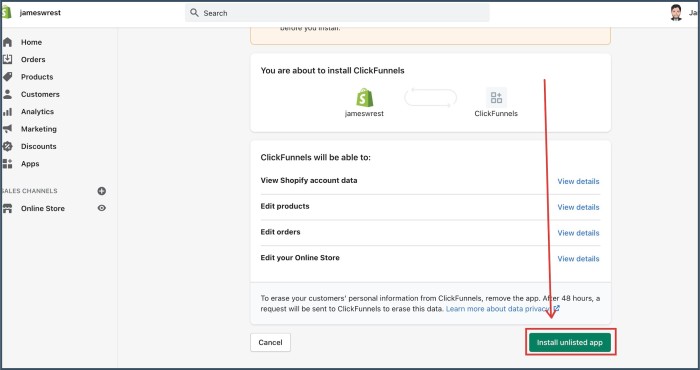
7. After doing this, a “Success” dialog should appear on the top-right corner of your screen, indicating that the integration has been successful.

ClickFunnels + Shopify – What You Can’t Do?
Now that we’ve looked at the ways you can use ClickFunnels with Shopify let’s take a look at some of the things you can’t do.
1. ClickFunnels Is Not A Perfect Solution
One of the things you need to understand about ClickFunnels is that it can’t do everything.
It’s not an eCommerce platform like Shopify. It’s not a CRM like HubSpot. And it’s definitely not an email marketing tool like Mailchimp. Instead, it’s a sales funnel builder.
At the end of the day, ClickFunnels is a tool that helps you build sales funnels to increase your conversion rate and generate more revenue.
If you think that integrating your Shopify store with ClickFunnels will magically increase your sales, you’re in for a rude awakening.
ClickFunnels is not a magic bullet. It can guide your prospects through your sales funnel, but it can’t do the selling for you. That’s your job.
2. ClickFunnels Is Not a Replacement for Shopify
Another thing to understand about ClickFunnels is that it’s not a shopping cart. It can’t replace your Shopify checkout process.
If you’re using ClickFunnels to build your sales funnel, you will still need to connect Shopify (or another eCommerce platform) to run your store.
ClickFunnels will help you generate leads and get them to opt-in to your email list.
From there, you can start building a relationship with them and ultimately sell them your products.
But, in order to actually sell them your products, they will need to go to your Shopify store to complete the purchase.
3. ClickFunnels Won’t Advertise Your Shopify Products
Lastly, it’s important to understand that ClickFunnels is not an advertising platform.
It won’t help you advertise your products on Facebook, Google, or anywhere else.
If you want to use ClickFunnels to sell your Shopify products, you will need to generate traffic to your sales funnel through other channels.
For example, you can use Facebook ads to drive traffic to your ClickFunnels sales funnel.
Or, you can work on your website’s SEO to attract organic traffic to your funnel.
Either way, you will need to generate traffic to your ClickFunnels sales funnel before it can start selling your Shopify products.
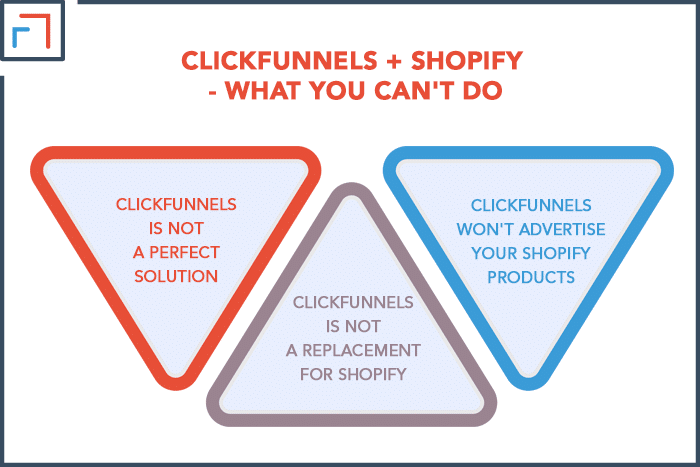
Conclusion
Now that you know all the ways you can (and can’t) use ClickFunnels with Shopify, it’s time to put what you’ve learned into action.
If you’re not using ClickFunnels yet, what are you waiting for?
Get started whenever you’re ready and see how it can help you sell more products and increase your conversion rate.
And if you’re already using ClickFunnels, be sure to take advantage of the Shopify integration to streamline your sales process and close more deals.
